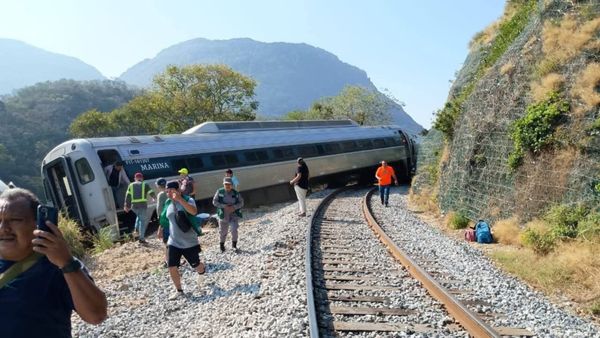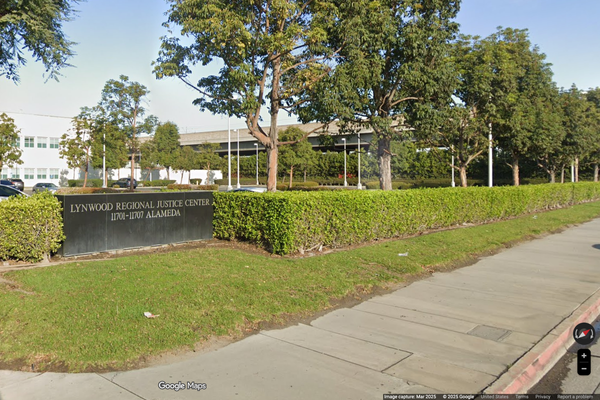Yemen’s Houthi rebels have vowed to continue attacks in the Red and Arabian seas hours after a suspected US strike targeting the militia killed dozens of African migrants.
The airstrike struck a detention centre holding more than a hundred African migrants in the city of Saada, killing 68 and injuring 47, according to the Houthis.
The Iran-aligned rebel group, which governs north-west Yemen, said the centre was under the supervision of the International Organization for Migration (IOM) and the Red Cross and targeting it “constitutes a full-fledged war crime”.
There is no confirmation of the number of casualties in the airstrike but the IOM, a United Nations agency, said many migrants were believed to have been killed or injured and described the loss of life as a tragedy.
“It is imperative that all efforts are made to avoid harm to civilians and to protect those most vulnerable in these challenging circumstances,” it said. The US military had no immediate comment.
The US has been conducting near-daily strikes against the Houthis since 15 March in an operation known as “Rough Rider”, seeking to end the threat it poses to vessels in the Red Sea and Gulf of Aden.
The Houthis started targeting Israeli and western vessels in the Red Sea in October 2023, in what they describe as solidarity with Palestinians in Gaza. The latest Houthi attack, on Saturday, targeted Israel’s Nevatim airbase with a Palestine-2 hypersonic ballistic missile. The missile was shot down by Israeli defences.
Graphic footage aired by the Houthis’ al-Masirah satellite news channel in the aftermath of the strike on Sunday night showed what appeared to be dead bodies and others wounded at the detention centre.
Yemen has long been a key transit country for people from Africa – mainly from Ethiopia and Somalia – trying to reach Saudi Arabia and Oman. One estimate claims there are more than 300,000 migrants across Yemen, a country devastated by a 10-year civil war. The Houthis allegedly make tens of thousands of dollars a week smuggling people over the border.
Monday’s strike recalled a similar attack by a Saudi-led coalition battling the Houthis in 2022 on the same compound, which caused a collapse, killing 66 detainees and wounding 113 others, a UN report later said. The Houthis shot dead 16 detainees who fled after the strike and wounded another 50, the UN said. The Saudi-led coalition sought to justify the strike by saying the Houthis built and launched drones there, but the UN said it was known to be a detention facility.
The US military has shifted tactics since the arrival of the Trump administration, which declared the Houthis as a foreign terrorist organisation in January. Since mid-March the US has mounted a much more sustained bombardment that is aimed at not only knocking out Houthi missile sites but also its political leadership, including Abdelmalek al-Houthi, the Houthi leader since 2004.
In a statement early on Monday before news of the latest strike broke, US Central command said: “To preserve operational security, we have intentionally limited disclosing details of our ongoing or future operations. We are very deliberate in our operational approach, but will not reveal specifics about what we’ve done or what we will do.”
In March, Donald Trump claimed that the Houthis – the last militant group in Iran’s self-described “axis of resistance” that is capable of regularly attacking Israel – had been “decimated” by US strikes. But he also warned: “Stop shooting at US ships, and we will stop shooting at you. Otherwise, we have only just begun, and the real pain is yet to come, for both the Houthis and their sponsors in Iran.”
The effectiveness of the US strikes is disputed and the Houthis in the past have shown an ability to withstand a bombardment by Saudi Arabian jets supplemented by British guidance.
The UK has also been more involved in the latest US military operations than any other European country. The bulk of the US strikes have been launched from USS Harry S Truman in the Red Sea, but additional strikes were carried out by USAF B-2 bombers operating from Diego Garcia, the UK base in the Indian Ocean leased to the US.
More than 750 strikes have been authorised since the decision in mid-March to raise the level of bombardment.
The Houthis for their part claim to have downed seven US Reaper drones in less than six weeks at a cost of more than $200m to the Pentagon.
The value of the US attacks on the Houthi leadership is disputed, with some claiming the movement would not be disrupted if its leader was assassinated. The Houthis are Zaydi Shia, a branch that believes that leadership should be limited to descendants of the prophet Muhammad and that leaders must fulfil specific criteria, including being recognised religious scholars.
Writing recently in the Yemen Review, Maysaa Shuja Al-Deen, a senior researcher at Sana’a Center for Strategic Studies, argued: “Without a respected local Zaydi authority figure capable of mediating or guiding the transition, the dispute would likely remain unresolved without external intervention. In this situation, Iran’s role would be key. Its political and military backing for one of the rival factions could prove decisive in shaping the group’s future direction.”







